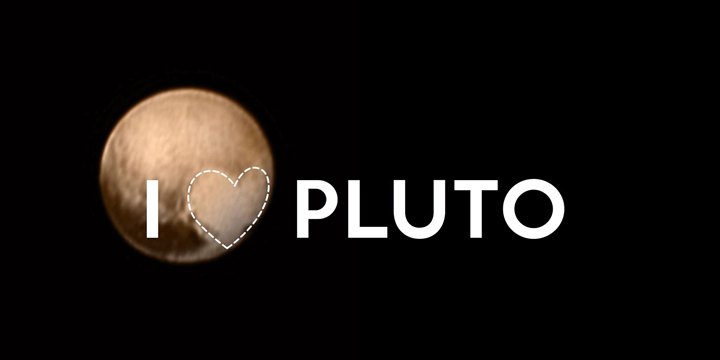WATCH ABOVE: The planned fly-by of Pluto is a rare feat and ‘New Horizons’ is expected to get within 7800 miles of Pluto’s orbit. Scientists know very little about Pluto’s surface but a team at John Hopkins University applied physics lab will soon find out. Elaine Quijano reports.

TORONTO – Pluto, sitting almost six billion kilometres from Earth, is preparing for the arrival of its first interplanetary visitor.
On Tuesday, if all goes as planned, NASA’s New Horizons spacecraft will whiz by the tiny, mysterious world at 49,600 kilometers per hour. It is the fastest spacecraft ever launched from Earth, travelling for more than nine years.
READ MORE: The countdown is on! Just over one week until we see Pluto in hi-def
And finally, we will know about a world that has only been a faint point of light since its discovery 85 years ago by American astronomer Clyde Tombaugh.
When it’s all over, this $700 million mission will give astronomers — and humanity — a better understanding of how we got here. How all the gases and debris — the ashes, if you will, of a dead star — coalesced to form our small star and then, slowly, over more than 4 billion years, the planets and then, us.
It was once thought that there were just two types of planets in our solar system: the inner, rocky planets and the outer gaseous planets. In the decades that passed following Pluto’s discovery, we began to learn that there was a whole other class: the outer icy worlds that lay billions and billions of kilometres from Earth.
As New Horizons prepares to visit Pluto, we are going to learn some incredible things. As Alan Stern said to a group in Toronto recently, “What we know about Pluto today could fit on 1 piece of paper…we’re going to write the textbook.”
Here are some questions we can expect to have answered about Pluto and our solar system.

Get daily National news
1. What is Pluto like?
We know so little about Pluto that when colour photographs of it for the first time, many thought it looked like Mars. We know so little about it, we didn’t even know it was red.
We have no idea if Pluto is cratered, icy, or even has volcanic processes at work. We will see Pluto in incredible detail allowing us to know what its atmosphere is comprised of as well as the little planet itself. Is it rocky? Icy? Is there an ocean beneath it? And the great part is, not only will there be incredible science done, but we will see amazing photographs of Pluto.
2. Are worlds beyond Pluto similar in composition?
Pluto is the king of the far off objects that orbit in the Kuiper Belt, a region of space home to hundreds of icy objects and the source of many comets. New Horizons is not only visiting Pluto and its system of five moons — two of which weren’t discovered until after the spacecraft was launched — but also other Kuiper Belt Objects (KBOs). These objects, billions of years old, will teach us more about the formation of our solar system.
3. What’s the deal with Pluto’s atmosphere?
Pluto has a thin atmosphere. But scientists have discovered that what little atmosphere it does have is flying off into space. This hasn’t been seen before. In fact, scientists believe that Earth’s original atmosphere which was comprised mainly of hydrogen and helium escaped into space in a similar manner. By studying Pluto, we will learn more about this process and we will accurately measure the composition of Pluto’s atmosphere.
READ MORE: Pluto an ’emerging puzzle’ as icy world comes into focus
4. How do Pluto and Charon work as a double planetary system?
Charon, Pluto’s largest moon, is about half the size of Pluto, making it the largest moon relative to its planet in the solar system. In fact, Charon doesn’t orbit Pluto in the same way our moon does Earth, but rather the pair of them share a central point of gravity and dance around that. Many think of the Pluto-Charon system as a double, or binary planetary system. We have never explored a system like that before.
As the days approach we will be treated to increasingly detailed images of Pluto and its system and we will begin to discover big things about this tiny world on the edge of our solar system.
Follow GlobalNews.ca for live coverage of the event and behind-the-scenes images and updates on Tuesday, July 14 from Johns Hopkins University’s Applied Physics Laboratory in Maryland.







Comments